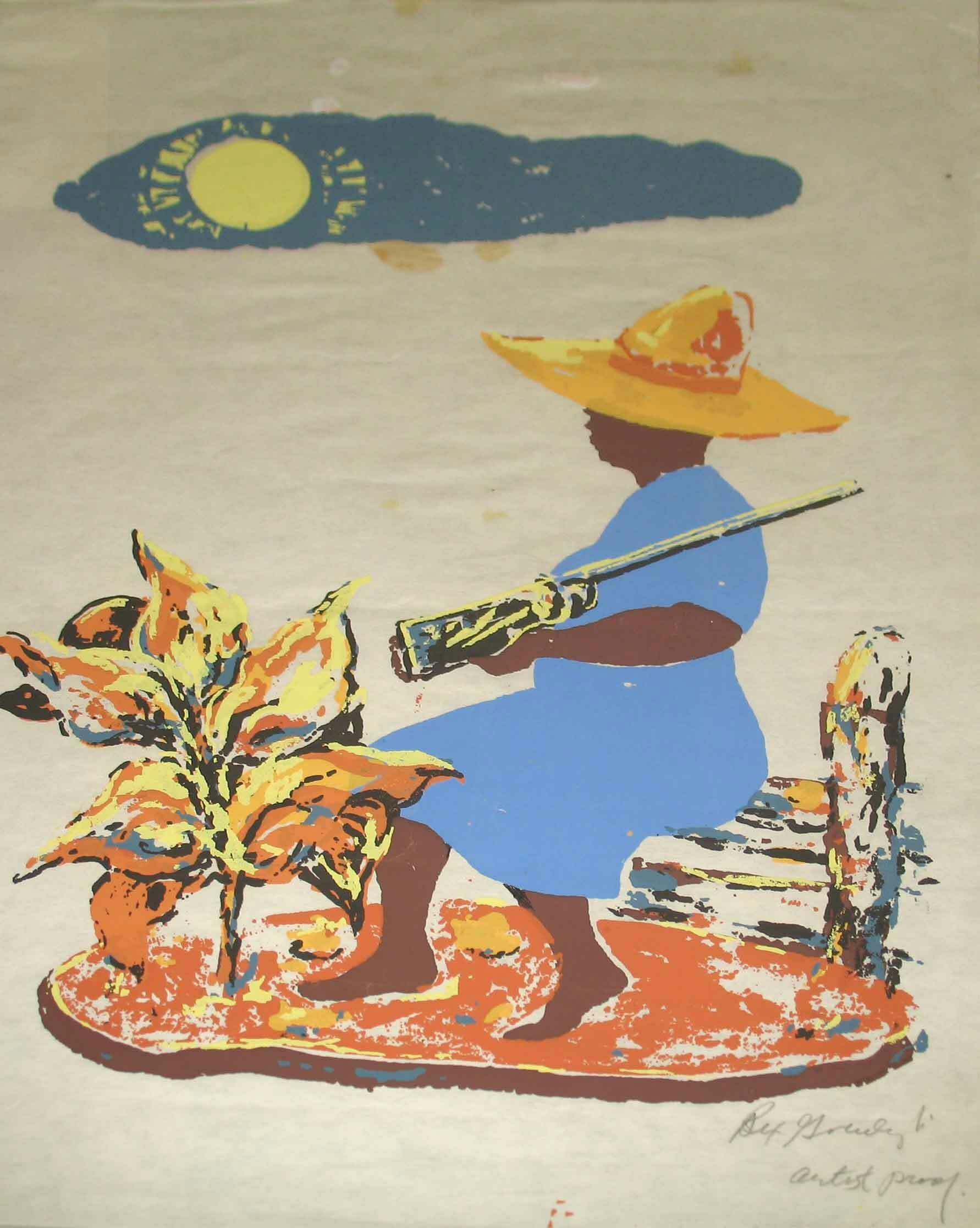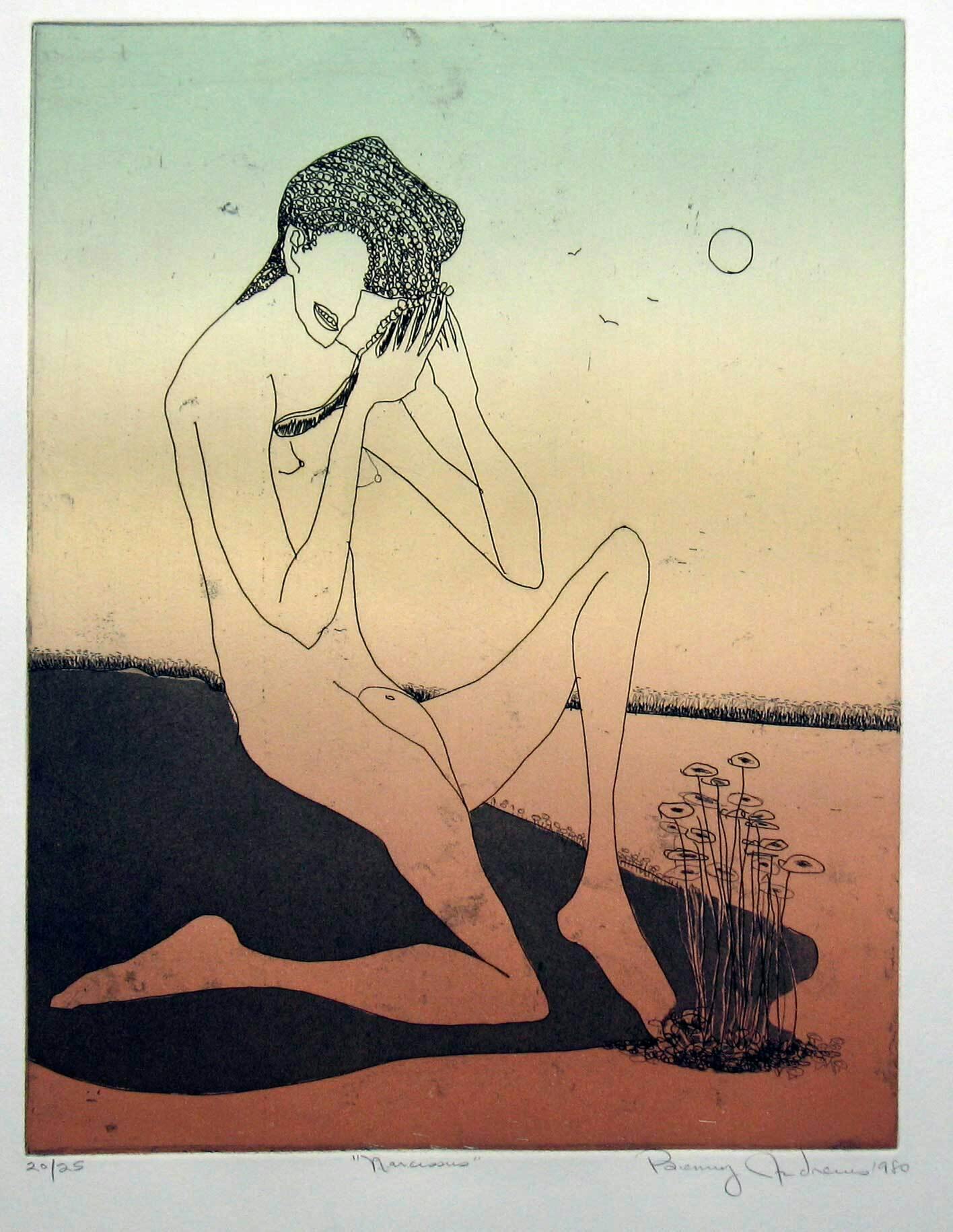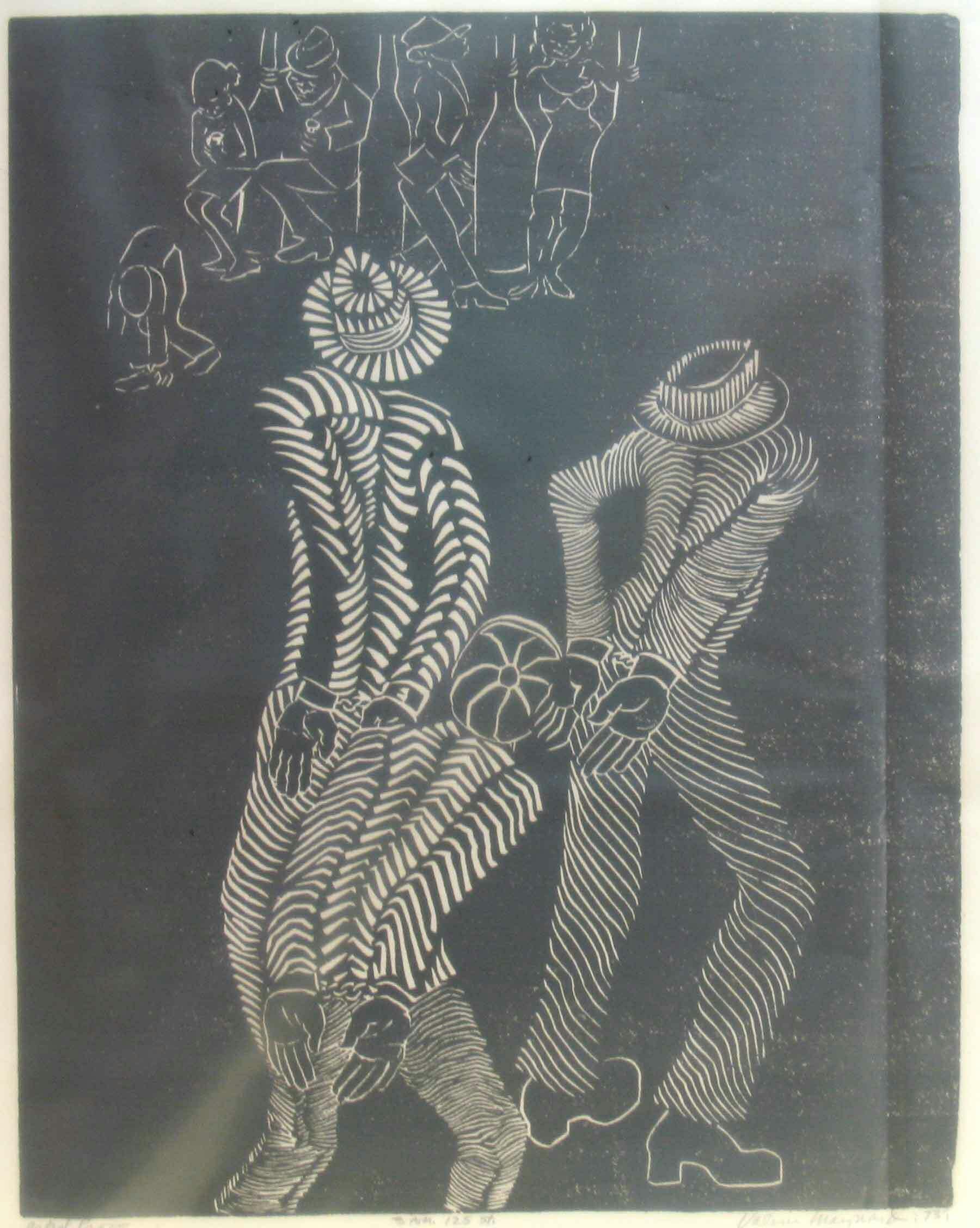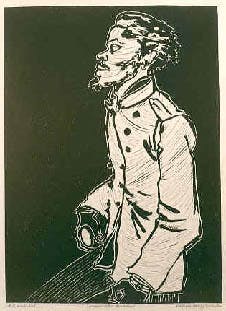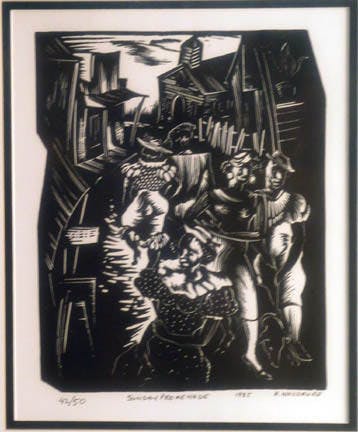Labor, Love, Live
11.14.2007-03.09.2008
Labor, Love, Live: Collection in Context presents an intimate selection of works on paper from The Studio Museum in Harlem’s permanent collection. The drawings, prints and photographs in this exhibition, many of which are being shown here for the first time, depict scenes from the everyday lives of African Americans throughout the twentieth century: workers returning home and resting after a hard day’s labor, people in quiet moments of reflection, and families and friends gathered in good and bad times.
The works in this exhibition explore the themes of labor, love and life in different ways. In Separation (1954), Elizabeth Catlett Mora’s linocut on paper, a woman is depicted behind a barbed-wire fence, staring across to the other side. It is unclear if she has been separated from her friends, family or freedom, but a sense of longing and weariness is evident in her face. On the other hand, Jacob Lawrence’s colorful lithograph, Tools (1977) focuses on the tools of labor instead of the actual laborers. In Sunday Promenade (1935/1985), one of four block prints by Hale Woodruff in this exhibition, men and women in hats of different shapes and sizes leave Sunday church services. For them, the walk home may be a time to catch up with friends, discuss the events of the past week or reflect on the sermon they just heard. The most recent works in this exhibition, two photographs from Barthélémy Toguo’s “Transit” series (1996–1999), examine the process of crossing borders, both real and imagined.
This exhibition continues the investigation of the formation and development of the Museum’s permanent collection and its critical role in the history of the institution. The permanent collection at The Studio Museum in Harlem began over thirty years ago, when the Museum began accepting works from generous artists and donors. Today the permanent collection numbers over 1,600 objects, and continues to grow in exciting directions. Collection in Context uses new strategies to highlight key holdings and expand the conversation around African-American art and artists of African descent.
Labor, Love, Live
11.14.2007-03.09.2008
Labor, Love, Live: Collection in Context presents an intimate selection of works on paper from The Studio Museum in Harlem’s permanent collection. The drawings, prints and photographs in this exhibition, many of which are being shown here for the first time, depict scenes from the everyday lives of African Americans throughout the twentieth century: workers returning home and resting after a hard day’s labor, people in quiet moments of reflection, and families and friends gathered in good and bad times.
The works in this exhibition explore the themes of labor, love and life in different ways. In Separation (1954), Elizabeth Catlett Mora’s linocut on paper, a woman is depicted behind a barbed-wire fence, staring across to the other side. It is unclear if she has been separated from her friends, family or freedom, but a sense of longing and weariness is evident in her face. On the other hand, Jacob Lawrence’s colorful lithograph, Tools (1977) focuses on the tools of labor instead of the actual laborers. In Sunday Promenade (1935/1985), one of four block prints by Hale Woodruff in this exhibition, men and women in hats of different shapes and sizes leave Sunday church services. For them, the walk home may be a time to catch up with friends, discuss the events of the past week or reflect on the sermon they just heard. The most recent works in this exhibition, two photographs from Barthélémy Toguo’s “Transit” series (1996–1999), examine the process of crossing borders, both real and imagined.
This exhibition continues the investigation of the formation and development of the Museum’s permanent collection and its critical role in the history of the institution. The permanent collection at The Studio Museum in Harlem began over thirty years ago, when the Museum began accepting works from generous artists and donors. Today the permanent collection numbers over 1,600 objects, and continues to grow in exciting directions. Collection in Context uses new strategies to highlight key holdings and expand the conversation around African-American art and artists of African descent.
